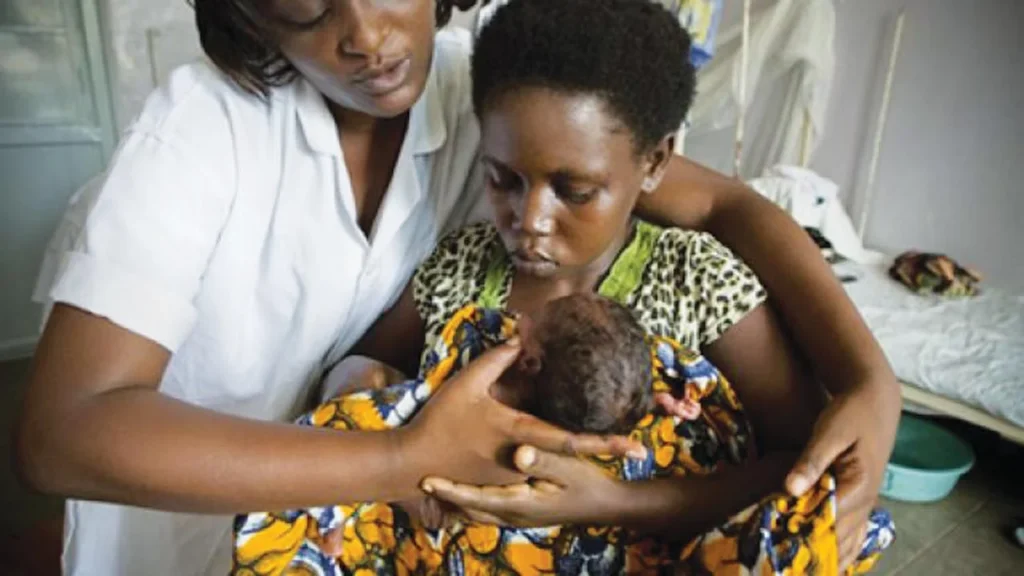Nigeria continues to grapple with alarmingly high rates of maternal and newborn mortality, despite years of commitments, policies, and international support aimed at reversing the trend. According to the World Health Organization and UNICEF, Nigeria accounts for nearly 20% of global maternal deaths and ranks among the top countries with the highest number of newborn fatalities. These grim statistics underscore a deep-rooted crisis in the country’s healthcare system — one that demands urgent, coordinated, and far-reaching reforms.
In this analysis, we examine the underlying causes of maternal and neonatal deaths in Nigeria and explore the strategic steps the country must take to save lives and build a resilient, equitable healthcare system.
The Grim Numbers: Maternal and Neonatal Deaths in Context
Nigeria’s maternal mortality ratio (MMR) stands at approximately 512 deaths per 100,000 live births, while neonatal mortality remains at around 35 deaths per 1,000 live births — both far above global averages. These deaths are largely preventable, yet they persist due to poor access to quality care, weak health systems, and significant socio-economic barriers.
The most common causes of maternal mortality include postpartum hemorrhage, eclampsia, sepsis, and complications from unsafe abortions. For newborns, leading causes include birth asphyxia, sepsis, low birth weight, and complications from preterm births — all of which could be addressed with timely and adequate medical intervention.

Barriers to Care: Why Nigerian Mothers and Babies Are Dying
The reasons behind these avoidable deaths are layered and systemic:
-
Limited Access to Skilled Birth Attendants: In many rural areas, pregnant women rely on traditional birth attendants due to lack of skilled health workers or inaccessible facilities. As a result, complications often go unrecognized or are mismanaged.
-
Poor Infrastructure: Many primary healthcare centers lack electricity, clean water, medical supplies, and functioning equipment. Emergency obstetric care is often unavailable, and referral systems are either slow or nonexistent.
-
Inadequate Funding: Nigeria allocates less than 5% of its national budget to health, far below the 15% benchmark set by the Abuja Declaration. This chronic underfunding starves hospitals and clinics of resources needed to offer safe maternal and newborn services.
-
Out-of-Pocket Costs: Despite efforts to implement universal health coverage, most Nigerians still pay for care directly, which discourages timely hospital visits and forces many women to seek care only when complications arise.
-
Cultural and Gender Barriers: Deep-rooted cultural practices, lack of education, and gender inequality continue to limit women’s ability to access healthcare, especially in conservative or remote communities.
What Needs to Change: Key Steps to Save Lives
Turning the tide on maternal and newborn mortality in Nigeria will require a multi-pronged approach. Experts, frontline healthcare workers, and international organizations consistently point to the following urgent reforms:
1. Strengthen Primary Healthcare Systems
Investing in Nigeria’s 30,000+ primary healthcare centers is critical. This includes renovating facilities, ensuring 24/7 access to skilled personnel, and equipping them with essential drugs and tools for antenatal, delivery, and postnatal care.
2. Expand Skilled Workforce
The government must prioritize the training, recruitment, and equitable distribution of midwives, obstetricians, pediatricians, and nurses — especially in underserved regions. Task-shifting policies can also allow trained community health workers to manage basic maternal and neonatal emergencies.
3. Implement Community-Based Interventions
Programs such as home visits by trained health workers, education on birth preparedness, and establishment of emergency transport systems can significantly reduce delays in seeking care.
4. Improve Health Insurance and Reduce Financial Barriers
Expanding the National Health Insurance Authority (NHIA) to fully cover maternal and newborn services — and enrolling more women in rural communities — will help reduce the burden of out-of-pocket expenses and encourage early care-seeking behavior.
5. Promote Behavior Change and Women’s Empowerment
Health education campaigns must target harmful cultural practices, encourage family planning, and promote male involvement in maternal health decisions. Empowering women economically and socially also increases their access to services.
6. Strengthen Data Systems and Accountability
Better tracking of maternal and newborn deaths through digital health records, real-time reporting, and death audits can help identify patterns, hold systems accountable, and shape smarter interventions.
Signs of Hope: Ongoing Efforts and Promising Models
There are encouraging signs of progress. States like Lagos, Kaduna, and Ondo have piloted maternal care interventions that are showing measurable results. For example, Ondo’s “Abiye” (Safe Motherhood) program reportedly cut maternal deaths by over 50% within a few years through improved access to skilled care, community engagement, and accountability systems.
At the federal level, the Renewed Hope Agenda under President Bola Tinubu includes commitments to reduce maternal mortality by expanding access to care and strengthening health systems. Donor-funded programs such as the World Bank’s Accelerating Nutrition Results in Nigeria (ANRiN) and Saving One Million Lives initiative have also injected much-needed support.
Conclusion: The Time for Action Is Now
Maternal and newborn mortality in Nigeria represents not just a health crisis but a national development emergency. Every woman and baby lost is a reflection of system failure — and a call to do better.
If Nigeria is to meet its Sustainable Development Goal of reducing maternal mortality to less than 70 per 100,000 live births by 2030, the time to act is now. With strong political will, adequate investment, community participation, and a renewed focus on primary healthcare, the country can rewrite its maternal health story — from tragedy to transformation.





